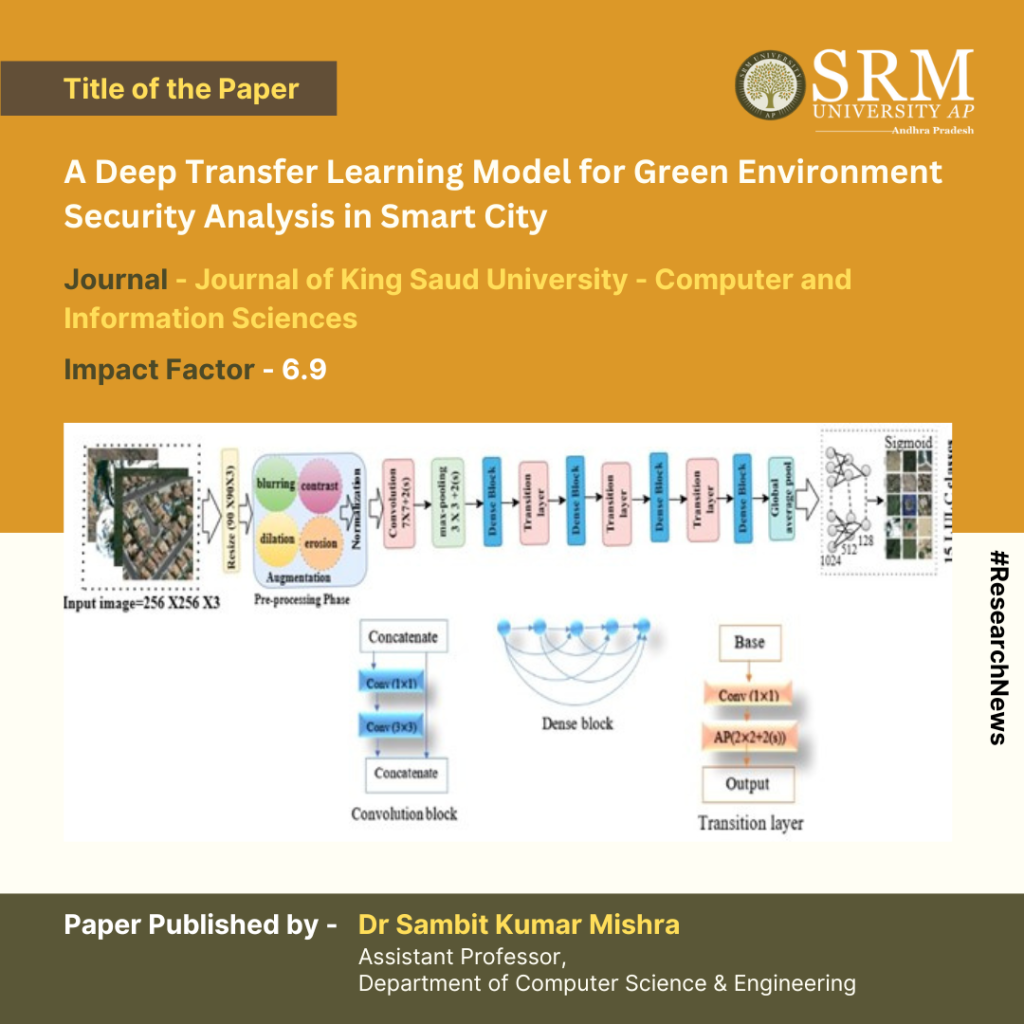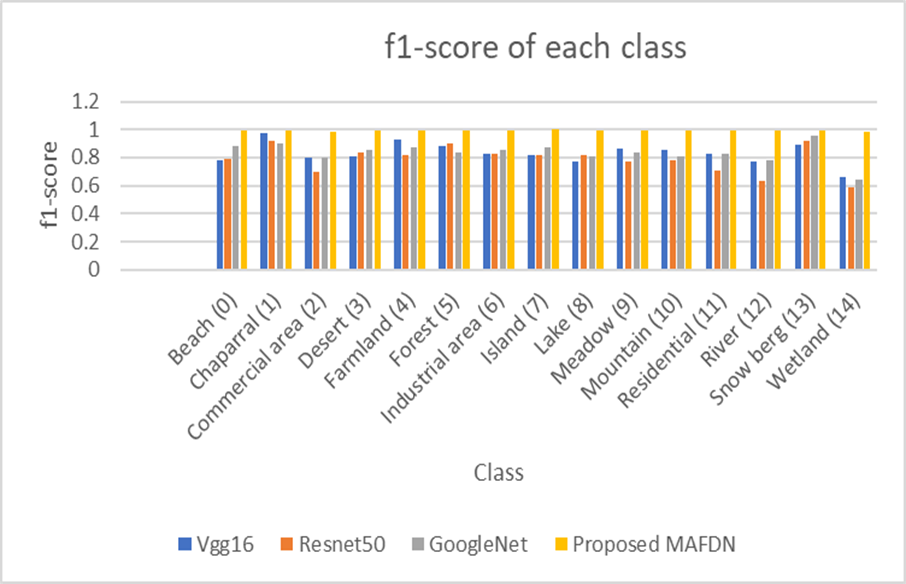
The Department of Computer Science and Engineering is pleased to announce an extraordinary research paper titled “A Deep Transfer Learning Model for Green Environment Security Analysis in Smart City“, authored by Dr Sambit Kumar Mishra, Assistant Professor, was published in the Journal of King Saud University – Computer and Information Sciences that falls within the Q1 quartile with an Impact Factor (IF) of 6.9. The study introduces a model to automatically classify high-resolution scene images for environmental conservation in smart cities. By enhancing the training dataset with spatial patterns, the model improves green resource management and personalised services. It also demonstrates the effectiveness of LULC classification in smart city environments using transfer learning. Data augmentation techniques improve model performance, and optimisation methods enhance efficiency, contributing to better environmental management.
Abstract
The research addresses the importance of green environmental security in smart cities and proposes a morphologically augmented fine-tuned DenseNet121 (MAFDN) model for Land Use and Land Cover (LULC) classification. This model aims to automate the categorisation of high spatial resolution scene images to facilitate green resource management and personalised services.

Dr Mishra collaborated with Dr Rasmita Dash and Madhusmita Sahu from SoA Deemed to be University, India, as well as Mamoona Humayun, Majed Alfayad, and Mohammed Assiri from universities in Saudi Arabia.
His plans include optimising the model using pruning methods to create lightweight scene classification models for resolving challenges in LULC datasets.

